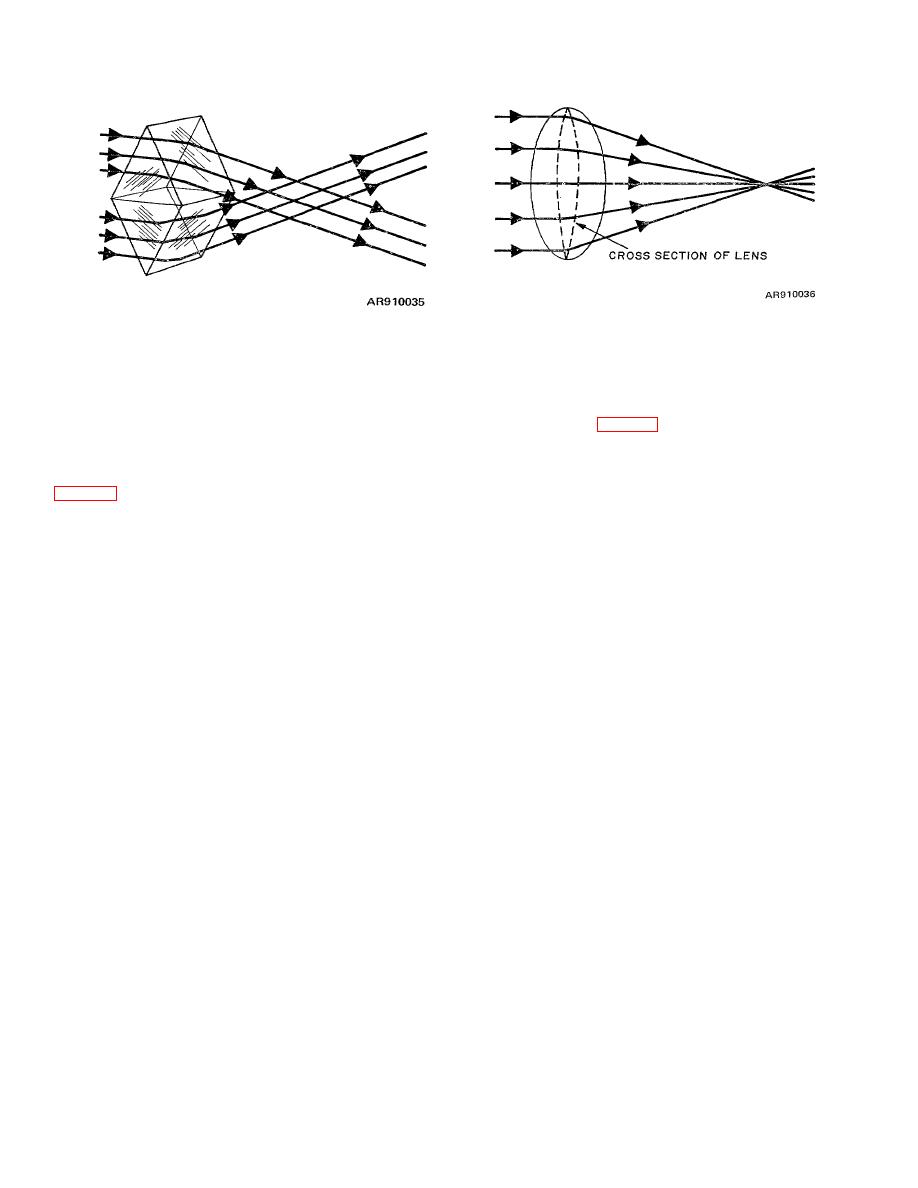 |
|||
|
|
|||
|
Page Title:
Figure 2-29. Deviation of rays by two prisms, base to base |
|
||
| ||||||||||
|
|
 TM 9-258
Figure 2-29. Deviation of rays by two prisms, base to
Figure 2-30. Deviation of rays by convergent lens
base.
(2) Myriads of rays may be considered to come from
every point of light on an object. Consider the refraction
(1) If the two prisms are cut in semicircular form,
of three such rays from a point of light passing through a
their surfaces made spherical, and the two bases
convergent lens (fig 2-31) to intersect at a point on the
cemented together, the result will be an optical element
other side of the lens. On the basis that a lens bends the
known as a convergent lens. (All convergent lenses are
rays as a prism does, rays passing through the upper
thicker at the center than at the edges. ) When parallel
and lower portions of the lens would be bent toward the
rays of light strike the front surface of a convergent lens
thickest part of the lens upon striking the first surface
and bent again toward the thickest part in emerging. As
a single point where they cross (color and other
the result, they would converge on the other side. A
aberrations are disregarded at this time). Such a lens
straight line drawn through the center of the two
may be thought of as consisting of an infinite number of
spherical surfaces is termed the axis of the lens. A
prisms arranged so that each directs light rays to the
central or axial ray would not be deviated because it
same single point. The lens bends the rays as a prism
would strike the surfaces of the lens at the normal. Such
does but, unlike a prism, it brings them to a point.
a ray would join the outer rays at their convergent point.
2-21
|
|
Privacy Statement - Press Release - Copyright Information. - Contact Us |